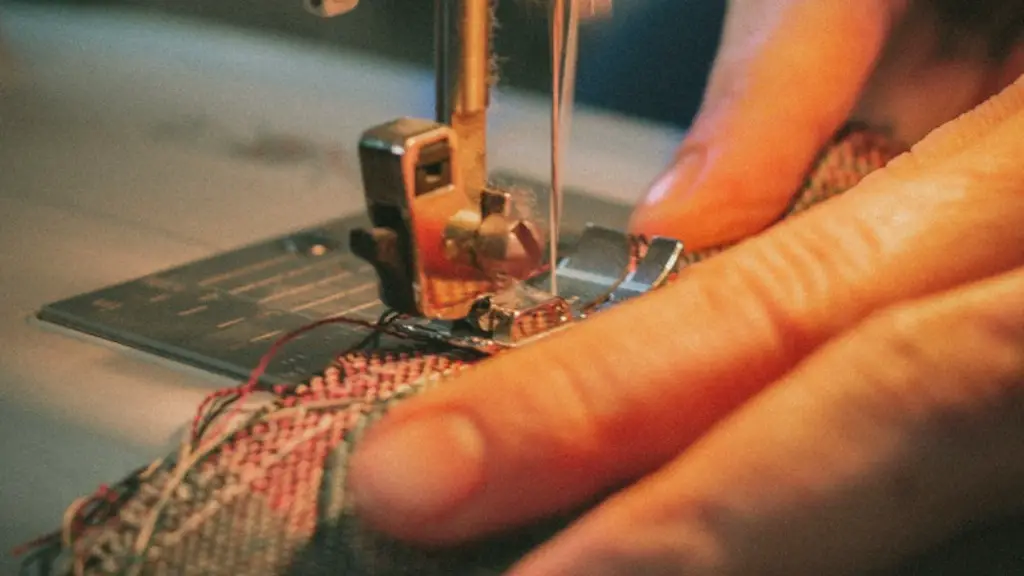Why Should I Use Blind Stitch Sewing?
Blind stitch sewing is a great technique for creating neat, professional looking seams on a variety of fabrics. It is commonly used for hems and heirloom garments, but can be used to sew almost any project. It will give you perfect results that look like they were done professionally. Blind stitch sewing is also very versatile in terms of the types of stitches and fabrics it can be used on.
When it comes to blind stitch sewing on a machine, the process is relatively easy. This guide will take you through the steps for blind stitch sewing with a sewing machine.
Preparing to Start Sewing
Before beginning the blind stitch process, you will need to gather all of the materials that you will need. This includes the fabric that you will be using, a marking tool, scissors, thread, a needle, pins, and a sewing machine. Once you have all of these items, you will be ready to start sewing.
Next, you will need to prepare your fabric. It is important to make sure that the fabric is cut to the correct size and shape. Once the fabric is cut, you will need to mark the seam allowance with a marking tool. This will be used to guide your stitching.
Setting Up the Sewing Machine
Once you have gathered the materials needed and prepared the fabric, you can start setting up the sewing machine. To do this, you will need to choose a stitch pattern and thread color. The most common stitch pattern for a blind stitch is a straight or zigzag stitch. You can also choose a different stitch pattern for decorative elements, such as buttonholes or embroidery. Once you have chosen the stitch pattern, you will need to thread the machine with the thread and set the stitch length and tension.
Starting The Stitching
Once the sewing machine is set up, you can start stitching. Start by placing the fabric under the presser foot and aligning the presser foot with the marked seam allowance. As you start sewing, the needle should be in the down position. This will ensure that the seams are even and the fabric will lay flat. As you sew, make sure to guide the fabric along the marked seam allowance using your hands.
Finishing the Seam
When you are finished stitching the seam, you will need to remove the fabric from the machine. Cut the threads leaving a bit of extra thread hanging off the edge of the fabric. Tie the threads together to secure the seam.
At this point, you have successfully completed the blind stitch sewing process. As you can see, sewing a blind stitch with a sewing machine is relatively straightforward and can be done in just a few steps.
Different Types of Blind Stitches
Blind stitch sewing is a versatile technique that can be used to sew a variety of fabrics. Some of the most common types of fabrics that are used with this technique include denim, cotton, silk, and wool. Each type of fabric requires a different stitch size and tension. It is important to adjust the settings on the machine to accommodate the fabric you are working with.
Tips for Sewing a Perfect Blind Stitch
When sewing a blind stitch, it is important to have the right supplies and use the correct settings. To make sure that the stitch will turn out properly, you should:
-Use the correct needle and thread for the fabric.
-Use the correct stitch pattern and tension.
-Keep the presser foot aligned with the seam allowance.
-Remove the fabric from the machine once the stitching is finished.
Stabilizing a Blind Stitch Sewing Project
Before you start stitching, it is important to stabilize the fabric so that it does not shift or bunch during the blind stitch sewing process. This can be done using a stabilizer such as interfacing, selvage tape, or stay tape. Interfacing and selvage tape are usually placed underneath the fabric while stay tape can be applied directly to the fabric.
Fusing a Blind Stitch Seam
Once the stitching is complete, you can use a fusible web to secure the seam and add extra strength. This will keep the seam from shifting or bunching when it is being worn. To apply the webbing, simply iron the fusible web onto the seam and let it cool.
Decorative Elements for Blind Stitch Sewing Projects
You can also use blind stitching to add decorative elements to your project. This includes adding appliques or embroidery elements to the fabric. To do this, you will need to choose the appropriate stitch pattern for the project and adjust the tension on the machine accordingly. When stitching appliques, you may need to use an iron-on transfer to apply the design to the fabric first.
Alternate Types of Blind Stitches
In addition to the typical straight or zigzag blind stitches, there are several other types of blindstitches that can be used on a sewing machine. Examples of these include gathering stitches, decorative topstitching and hems, and shell stitches. Each of these stitches will provide a different look and can be used to create a unique and professional finished product.
Correcting Mistakes on a Blind Stitch
If you make a mistake while sewing a blind stitch, you can easily correct it. Unpick the stitches and then re-stitch the seam. Make sure to adjust the stitch size and tension accordingly so that the stitches will blend in with the rest of the fabric.
Conclusion
Blind stitching is an incredibly useful sewing technique that can be used for a variety of projects. Using a sewing machine to create a perfect blind stitch will ensure that the seams will look professional and neat. With practice, you can quickly and easily create beautiful blind stitch projects.



